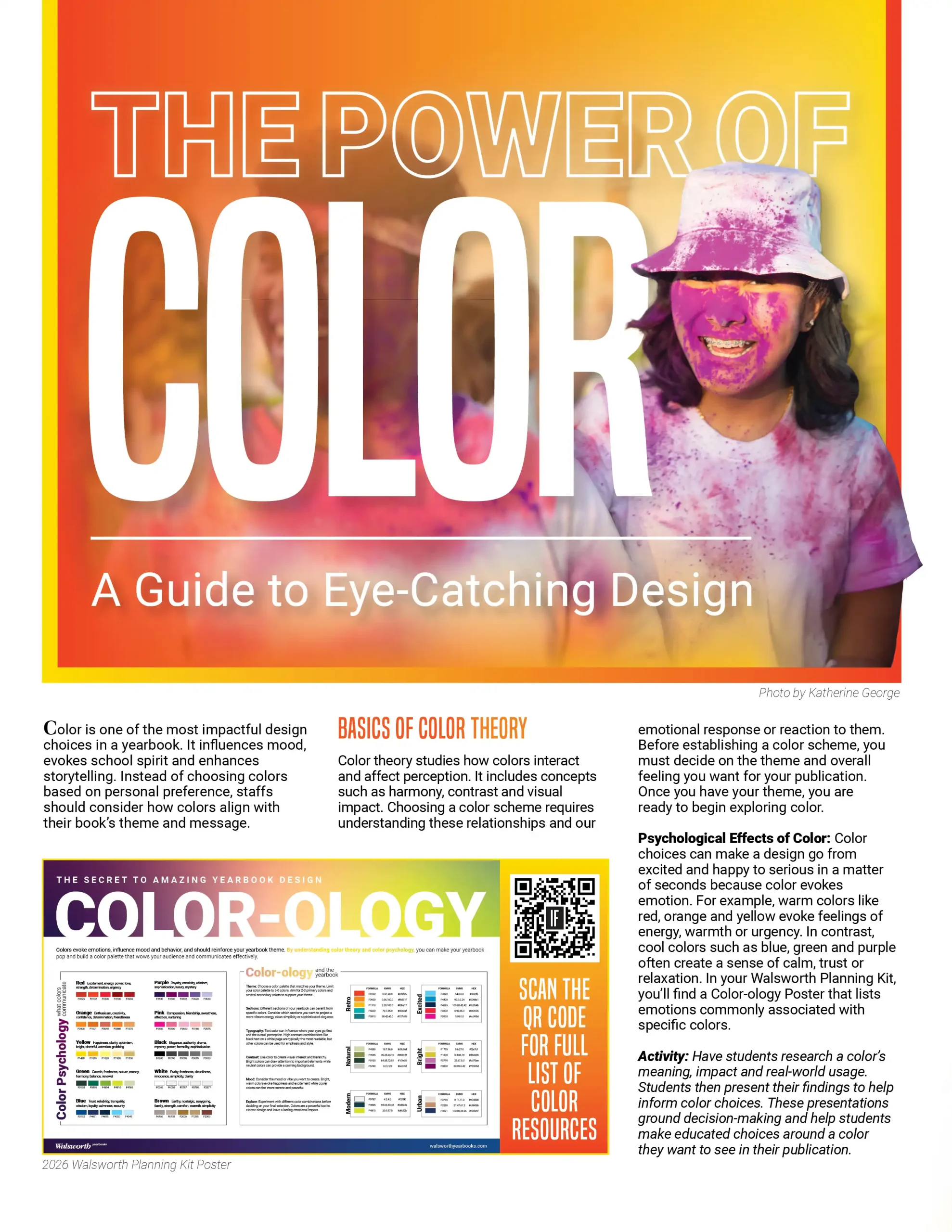Color is one of the most impactful design choices in a yearbook. It influences mood, evokes school spirit and enhances storytelling. Instead of choosing colors based on personal preference, staffs should consider how colors align with their book’s theme and message. Basics of Color Theory Color theory studies how colors interact and affect perception. It includes concepts such as harmony, …
The websites Humans of New York and StoryCorps are great examples of written and visual storytelling. Use them to teach your students how to get more personal interest stories into this year’s book if there’s time, or to start training next year’s reporters. One of a journalist’s primary jobs is to tell compelling stories. Telling great stories starts with trust …
STEP 1 -Determine if the issue will be covered by considering the following points:
Getting caught up in sports action is fine for fans, but editors need to look beyond the contact sheet frames showing action on the field. When the game-winning play fails to score or a key player is out of a big game, it is the easily overlooked sideline image that often tells the story best.
A photo can tell several stories, depending on how it is cropped. Leaving this photo full-frame shows the three runners who are leading the pack of bunched-up runners farther back.
Material presented in the clearest, most obvious way. Commonly presented preceded by numbers or bullets. Great way to unload lists of names, awards, etc. from the body of feature copy.
Traditionally, a yearbook’s cover, endsheets, title page, opening, closing and division spreads together form the book’s theme development package. On these theme pages, both the verbal and the visual are important. Recurring motifs-words, graphic elements, and designs-link these pages just as the theme or unifying idea links the sections of the book.
Clearly explain the group’s topic and goal.
Allow participants a few minutes to think.
Sometimes a few words are all that is necessary in order to communicate a theme.
If a theme is truly relevant to a specific school and the student body of that year, it will be reflected throughout the yearbook in non-theme areas by the topics that are covered and the reporting methods used. In the mini-mag of the 1998 Lair, the staff covered a variety of issues in a round-table, conversational-style format that was inspired by their theme, “Communication.”


